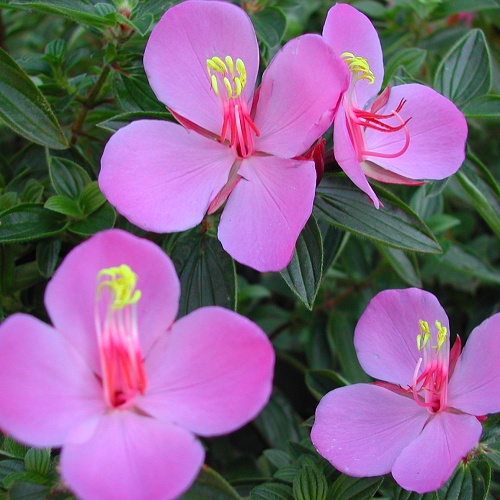Germinating the seeds
Getting started -- Plant your seeds when you receive them for best results. Use small pots or cups that are 2-4 inches (5-10 cm) tall. The pots should have drainage holes. Use well-draining soil.
I use a mix of 1 part
coir fiber The seeds are tiny, so work in a well-lit area. Fill the pots with soil and sprinkle several seeds evenly across the surface of each pot. An easy way to pick up the seeds is by breathing on your finger tip to lightly moisten it, then dabbing the seeds with it. If you have
long-fibered sphagnum moss For the next few weeks, ensure that the soil surface never dries out. You can maintain high humidity by enclosing the pots in a plastic container or bag - just leave it open a crack to let in fresh air. Once or twice a day, drip a few drops of water on the surface to keep it moist. The seeds germinate well at about 65-77 degrees F (18-25°C). I don't have experience germinating them outside this temperature
range. I recommend placing a
minimum/maximum thermometer Place the containers in a bright spot out of direct sun. An LED or fluorescent bulb kept 4 inches (10 cm) away provides the right amount of light (See: "Growing indoors with LED lights"). They tend to start sprouting within 3 weeks, but can sometimes take longer to start, especially at cooler temperatures. Continue dripping water on the soil surface after they sprout, since young seedlings have a small root system. When the seedlings are a month old, you may carefully pull them and transplant them, however i recommend simply cutting off any slower ones, and leaving 1 strong seedling in each pot. Fertilizing -- The first 2
months, feed weekly
with a small amount of dilute (1/8 strength) liquid fertilizer.
Hydroponic fertilizer
is ideal for seedlings, because it is easily absorbed and contains all essential
nutrients. After 2 months, you may switch to a granular fertilizer Watering -- Once the seedlings are a month old, you may allow the soil surface to dry between waterings, but keep the rest of the soil evenly moist (but not soggy). Growing onward... Lighting -- The plant likes part sun, but will probably need protection from strong afternoon sun in warmer conditions. Climate -- It grows well in mild daytime temperatures and cool but frost-free nights. Little is known about its climate tolerances, but it's possible that it might not thrive if temperatures consistently get above 85° F (29°C) and nights are above 65°F (18°C). It probably cannot survive below about 28° F (-2°C). Indoors, keep the humidity above about 40-45%, perhaps with the use of an ultrasonic humidifier if necessary. If you have any questions or problems, please email me. Enjoy your plants! - Jeff Strange Wonderful Things
|
|||||||||


